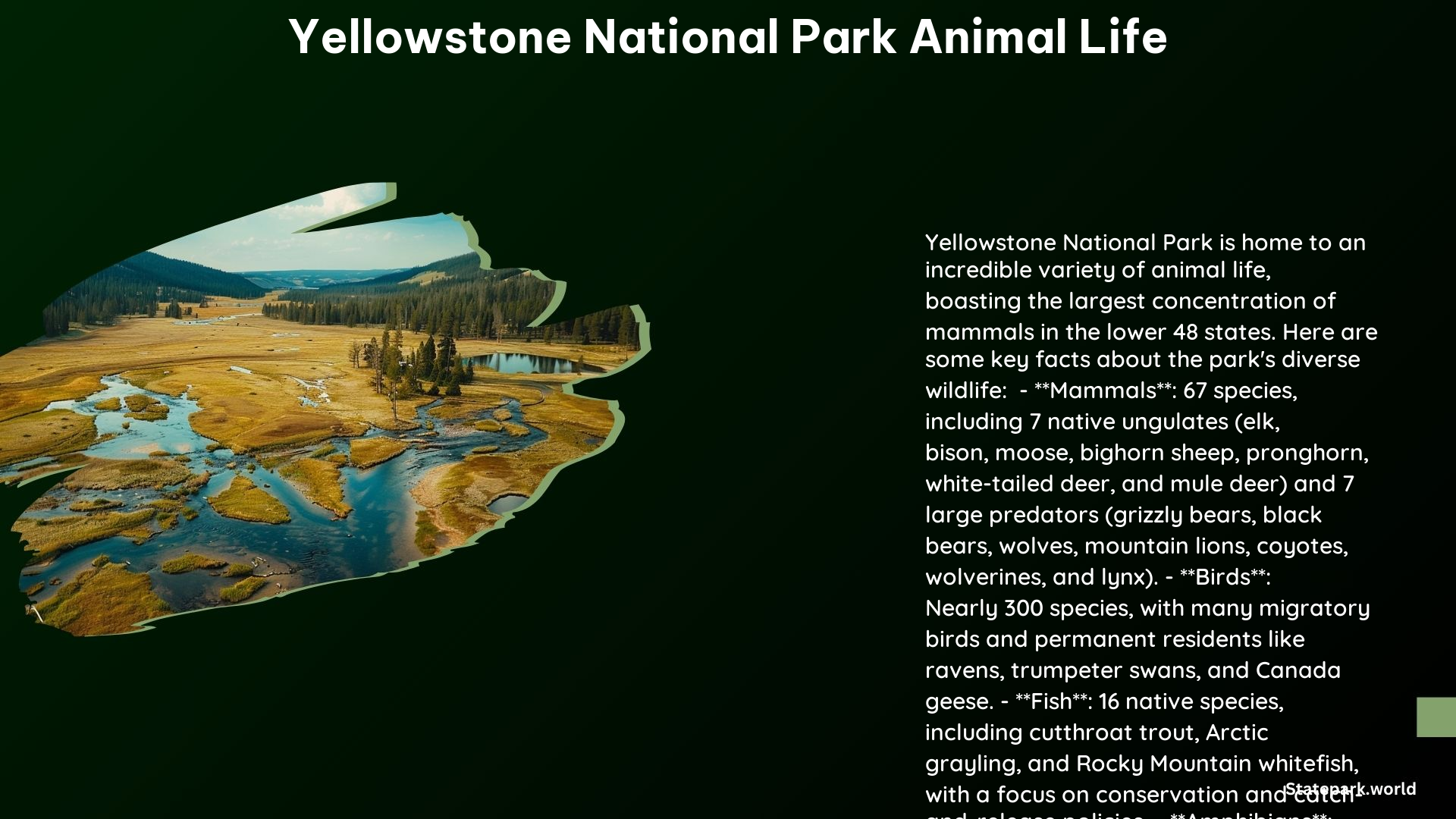Yellowstone National Park is renowned for its diverse and abundant wildlife, boasting the largest concentration of mammals in the lower 48 states. From the majestic bison to the elusive wolves, the park is a haven for a wide variety of mammalian species. In this blog post, we’ll explore the different types of mammals found in Yellowstone and provide essential precautions for visitors to ensure safe wildlife viewing.
Types of Mammals Found in Yellowstone National Park
- Elk: The most abundant large animal in the park, with summer herd sizes reaching 10,000-20,000. Elk bulls are known for their impressive antlers, which can grow up to 6 feet wide and weigh 30 pounds.
- Bison: Yellowstone is home to the nation’s largest remaining bison population on public land. Males can weigh up to 2,000 pounds and females up to 1,000 pounds. They are known for their speed, reaching 35 miles per hour and jumping heights of over 5 feet.
- Wolves: Reintroduced in 1995, wolves are highly social with an average pack size of 10. They live longer in the park than outside, with an average lifespan of 1-2 years longer.
- Black Bears: Found throughout the park, black bears coexist with grizzlies. Only 50% are actually black, with the remaining colors being brown, blond, or cinnamon.
- Coyotes: Intelligent and agile, coyotes are abundant in the park and can be heard frequently at dusk and dawn.
- Pronghorn: The surviving member of a group of animals that evolved in North America during the past 20 million years, pronghorns can run for sustained sprints of 45-50 mph.
- Moose: The tallest of the deer family, moose are found in marshy areas and along bodies of water, consuming an average of 26 pounds of food per day.
- Grizzly Bears: One of the two bear species in the park, grizzly bears are known for their strength and omnivorous diet.
- Mountain Goats: Non-native species, mountain goats are found in the park’s mountainous regions.
- Bighorn Sheep: Migratory bighorn sheep are found in the park, known for their impressive horns.
Precautions for Viewing Wildlife in Yellowstone National Park

Observing the diverse wildlife in Yellowstone National Park is a thrilling experience, but it’s essential to take the necessary precautions to ensure the safety of both visitors and animals.
- Keep a Safe Distance: Maintain a safe distance from all wildlife. Approaching on foot within 100 yards of bears or wolves, or within 25 yards of other wildlife, is prohibited.
- Use Binoculars or Telephoto Lenses: Use binoculars or telephoto lenses for safe viewing and to avoid disturbing wildlife.
- Use Roadside Pullouts: Use roadside pullouts when viewing wildlife to avoid blocking traffic and to ensure a safe distance.
- Be Aware of Body Language: If an animal changes its behavior or appears agitated due to your presence, you are too close. Keep an eye on body language and back away if necessary.
- Do Not Feed Wildlife: Refrain from feeding wildlife, as this can lead to aggressive behavior and habituation to human food.
Additional Information
- Guided Tours: Consider joining guided tours to learn more about Yellowstone’s wildlife and how to observe them safely.
- Seasonal Viewing: Different seasons offer unique opportunities for wildlife viewing. For example, winter is ideal for spotting wolves, and spring is a great time to see bears and elk.
- Conservation Efforts: The National Park Service works to maintain ecological processes and monitor population changes to ensure the long-term health of Yellowstone’s wildlife.
Yellowstone National Park is a true natural wonder, and its diverse and abundant wildlife is a testament to the park’s ecological richness. By following the necessary precautions and respecting the animals, visitors can safely enjoy the incredible opportunity to observe these magnificent creatures in their natural habitat.
References
- https://www.yellowstonenationalparklodges.com/connect/yellowstone-hot-spot/ten-animals-you-may-or-may-not-see-in-yellowstone/
- https://www.britannica.com/place/Yellowstone-National-Park/Plant-and-animal-life
- https://www.nps.gov/yell/learn/nature/mammals.htm
- https://www.nps.gov/yell/learn/nature/wildlife.htm
- https://www.nwf.org/Educational-Resources/Wildlife-Guide/Wild-Places/Yellowstone
